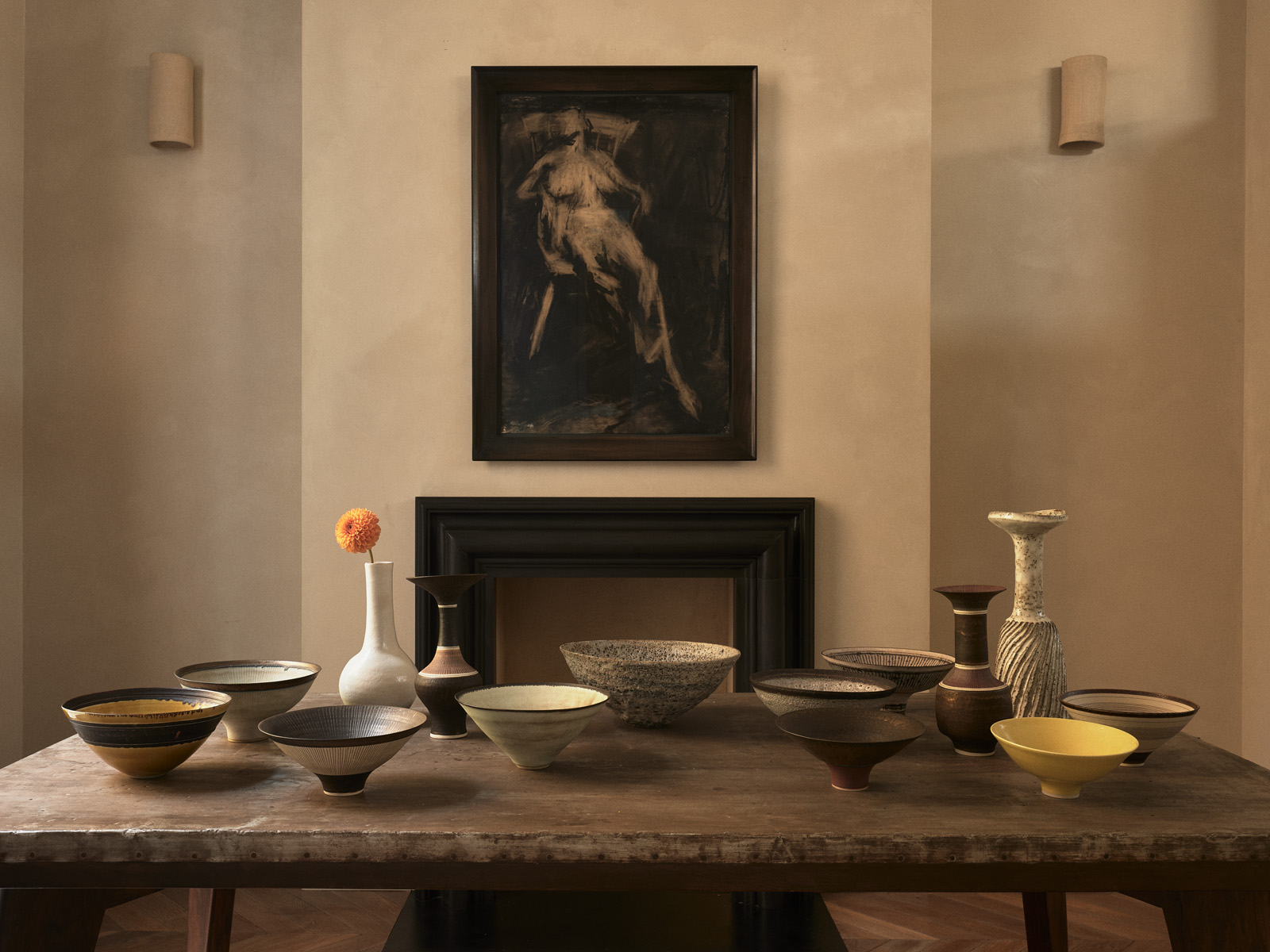At Rajan Bijlani’s London Townhouse, Postwar Ceramics Meet Chandigarh Rarities
The collector transforms his home into an intimate setting where works by Frank Auerbach, Lucie Rie, and Emmanuel Cooper trace the city’s spirit of transformation

Last year, collector and developer Rajan Bijlani opened his London townhouse to the public for the first time to present an exhibition that spotlighted artists and designers of South Asian heritage. The show also previewed his remarkable 500-piece trove of rare modernist furniture designed for Chandigarh, India. Conceived after Partition as a symbol of a newly independent nation, the city was master-planned by architect Le Corbusier and his cousin, Pierre Jeanneret, who also designed its furniture—a series of pieces crafted between 1954 and 1966 from teak and rosewood that fused European modernism with Indian material traditions. Bijlani first encountered Chandigarh furniture on a formative trip to India and began collecting in 2004, when he was in his twenties, reupholstering many in sumptuous Loro Piana cashmeres as a nod to the nearby Himalayas.

After that exhibition concluded, Bijlani recalls wanting to turn his attention even closer to home; his townhouse was formerly the studio of British potter Emmanuel Cooper. That instinct led to “Electric Kiln,” his current exhibition curated with 20th-century art and design specialist Michael Jefferson and centered on works by Cooper alongside contemporaries Frank Auerbach and Lucie Rie. “It felt like a natural continuation of that journey, this time honoring my surroundings and Cooper, whose legacy is embedded in the house itself,” Bijlani says.


As its title suggests, the exhibition orbits the electric kiln—a tool for firing clay and a metaphor for transformation—while drawing on the site’s layered history. “My home has always fascinated me because it existed between worlds: part living space, part studio,” he says. “While researching the exhibition, I realized it was also a window onto a much wider story: North London has long been a crossroads for artists, potters, and designers, with ideas, materials, and techniques flowing freely between studios and homes. I came across small, almost accidental connections, people who passed through briefly, shared materials, or influenced one another in subtle ways. Those discoveries revealed a web of collaboration beneath the surface.”
Staged across three floors, the show traces that exchange by placing paintings, charcoals, ceramics, and Chandigarh furnishings in conversation within Bijlani’s intimate residential setting. The ground level opens with monochromatic ceramics by Cooper and Rie, their volcanic glazes and sgraffito surfaces arranged on a metal-topped Jeanneret table near Auerbach charcoals. Upstairs overlooks Primrose Hill, the subject of nearby Auerbach paintings displayed with tonal ceramics whose molten glazes echo the movements of his impasto. A lower floor presents Auerbach heads—somber charcoal portraits dense with psychological charge—punctuated by flashes of vivid color reflected in the surrounding ceramics.


Never-before-seen furnishings from Chandigarh anchor the show. Highlights include a teak Minister’s Desk from the High Court, believed to be the only surviving example, and a Rope Chair from Le Corbusier and Jeanneret’s private residences, both cornerstones of Bijlani’s collection. Their presence brings Chandigarh’s material language into dialogue with the ambitious experimentation of each artist. “The furniture grounds the space, the ceramics soften it, and the Auerbachs electrify it,” Bijlani says.
Auerbach’s thick impasto captures the physicality of a city under construction, with paint pushed and scraped across the surface. Cooper’s glazes carry similar energy: volcanic skins and vivid palettes that evoke asphalt, concrete, and the lights of London’s skyline. Rie, who taught Cooper and also worked with the electric kiln, advanced an urban approach to ceramics. In the exhibition, her pitted vases, sgraffito bowls, and flared bottles engage with London’s textures while aligning with modernist principles. Bijlani was drawn to how the kiln reshaped making: “It altered the rhythm of ceramic practice and introduced new kinds of freedom. Suddenly makers could experiment with temperature, glaze, and timing in ways that were previously impossible.”

Named for the tool central to both Rie and Cooper, “Electric Kiln” recasts it as an extended metaphor for London’s postwar volatility and transformation. It embodies an evolving city and the imprint it left on three seminal British artists. “Seeing all these pieces together, I’ve been struck by how naturally they coexist,” Bijlani says. “There’s a conversation across mediums and decades about endurance, reinvention, and the heroism of making things by hand.”
“Electric Kiln will be on view by appointment only until November 16, 2025.